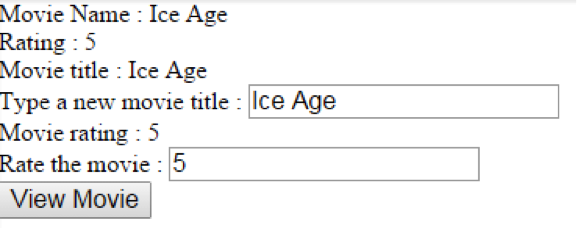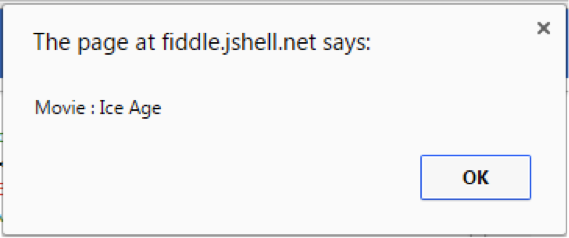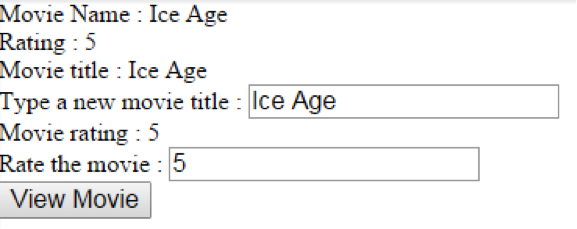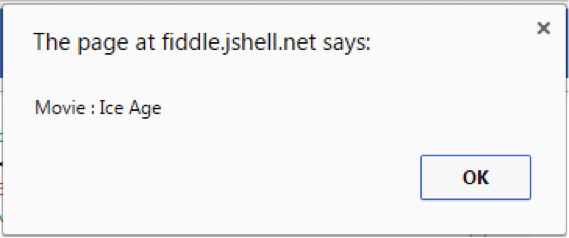AngularJS: Understanding Directive Scope
In the previous post, we created custom AngularJS directives. However, we did not address how directives manipulate data objects that are defined in the Angular app. In certain use cases, the directive might need to use the objects and functions defined in the controller—manipulate their values and make calls to the functions. In this post we shall explore how this is done from within a directive.
Scope in a Directive
How does a directive interact with the page controller? How can objects be passed to the directive? How are functions defined in scope of the controller called from inside the directive?
Well, all of the directives have a scope associated with them. This scope object is used for accessing the variables and functions defined in the AngularJS controllers, and the controller and link functions of the directive. By default, directives do not create their own scope; instead they use the scope of their parent, generally a controller (within the scope of which the directive is defined).
We can change the default scope of the directive using the scope field of the DDO (Data Definition Object). Note that scope is a property of the directive, just like restrict, template, etc. The value of the scope field defines how the scope of the directive will be created and used. These values are ‘true’, ‘false,’ and ‘{}’.
Let’s start exploring the usage of each of these.
scope: false
This is the default value of scope in the directive definition. In this case, the directive has the same scope as its parent controller. The following is an example of creating a movie directive:
We create a controller and define a movie title in it. This movie will then be modified in the directive.
- Creating an Angular app and controller
var movieApp = angular.module("movieApp",[]); movieApp.controller("movieController",function($scope){ $scope.movie = "Ice Age"; }); - Defining the directive
movieApp.directive("movieDirective", function(){ return { restrict: "E", scope: false, template: "<div>Movie title : {{movie}}</div>"+ "Type a new movie title : <input type='text' ng-model='movie' />" }; }); - Finally, embedding the directive in HTML
<div ng-app="movieApp"> <div ng-controller="movieController"> <h2>Movie: {{movie}}</h2> Change Movie Title : <input type='text' ng-model='movie'/> <movie-directive></movie-directive> </div> </div>
In the code snippet given above, the movie name in the heading tag takes value from the controller’s scope. Note that the movie title in the directive template also gets its value from the controller scope, that is, Ice Age. Since the scope of the directive is not set, it uses the parent scope. Therefore, modifying the movie title in the directive text box modifies the movie title in the heading tag also. Similarly, changes done to the movie title in the heading tag are reflected in the directive. But this restricts the directive to be used outside the controller scope, which reduces the directive’s reusability.
Let’s see the output:
On changing the Movie Title in the text box above:
The Movie Title in all of the places gets modified.
scope: true
Let’s change the scope field of the directive in the last example to true
scope: true
In this case,
In this case, the movie title in both the header section and the directive is initialized to the same value defined in the controller’s scope, Ice Age.
Now, modifying the movie title in the directive modifies the directive content only, not the heading content.
In order to see whether changing the heading content changes the directive content, let’s modify the movie title in the text box following the heading tag.
<div ng-app="movieApp">
<div ng-controller="movieController">
<h2>Movie: {{movie}}</h2>
Change Movie Title : <input type='text' ng-model='movie'/>
<movie-directive></movie-directive>
</div>
</div>
Entering the movie title in this text box changes the movie title in the heading tag only and not in the directive.
What happened here? This time the directive got its own scope! Angular creates a new scope for the directive that is inherited from the parent (controller) scope.
There is one thing to note here: If the content in the text box in the header section is changed first, then this change is also reflected inside the directive. However, after the movie title in the directive is changed, any changes made to the heading text no longer affect the directive content. The explanation for this is that the ng-model creates a new movie variable only after the text box value is changed. Until then, it refers to the value in the parent scope.
So here the content of both the text boxes change when the header section text box is modified first.
scope: {}
This is how the directive gets its isolated scope. We pass an object for the scope field in this case. This way, the scope of the directive is not inherited from the parent and is instead completely detached from it. Thus, the directive has an isolated scope.
To see it in action, we modify the directive code:
movieApp.directive("movieDirective", function(){
return {
restrict: "E",
scope: {},
template: "<div>Movie title : {{movie}}</div>"+
"Type a new movie title : <input type='text' ng-model='movie' />"
};
});
Note that the directive no longer takes the movie title defined in the controller. It has its own model, ‘movie,’ defined in the template. In addition, the changes to the controller content in no way affect the directive. The directive has complete control over its contents – an isolated scope!
Even though the directive has its own scope, there may be scenarios where the directive needs to exchange data with the parent. AngularJS covers that too, by allowing communication between the parent scope and the directive. The directive can gain access to the parent scope by using some special symbols known as prefixes.
Isolated scope – Prefixes
In the case of an isolated scope, the directive scope is completely unaware of its parent’s scope. So how does a directive access the parent scope objects or make calls to the methods?
The directive scope uses prefixes to achieve that. Using prefixes helps establish a two-way or one-way binding between parent and directive scopes, and also make calls to parent scope methods. To access any data in the parent scope requires passing the data at two places – the directive scope and the directive tag.
- Passing data to the directive scope:
movieApp.directive("movieDirective", function(){ return { restrict: "E", scope: { movie: ‘=’ }, template: "<div>Movie title : {{movie}}</div>"+ "Type a new movie title : <input type='text' ng-model='movie' />" }; }); - Passing data in the directive tag
<movie-directive movie="movie"></movie-directive>
Here movie is a property of the directive scope and can be accessed as a directive data. Note that the behavior of these properties defined in the directive scope depends how they are bound to the directive – also known as prefixes – provided. These prefixes are used to bind the parent scope’s methods and properties to the directive scope.
There are 3 types of prefixes in AngularJS:
- ‘@’ – Text binding / one-way binding
- ‘=’ – Direct model binding / two-way binding
- ‘&’ – Behavior binding / Method binding
Let’s continue with the example of the movie directive and add more properties to the scope method so as to understand all of these prefixes.
In this example, we add a rating property to the existing movie directive. Now when the movie is rated, this value is modified in the directive scope and is reflected there only, not in the header scope. However, when the movie name is changed in the movies section, the change is also reflected in the header scope. Finally, a method call displays the movie name in an alert box. The following code puts all of this in action.
- Modifying the controller
movieApp.controller("movieController",function($scope){ $scope.movie = "Ice Age"; $scope.rating = 5; $scope.display = function(movie) { alert("Movie : " + movie); } }); - Modifying the directive
movieApp.directive("movieDirective", function(){ return { restrict: "E", scope: { movie: '=', rating: '@', display: '&' }, template: "<div>Movie title : {{movie}}</div>"+ "Type a new movie title : <input type='text' ng-model='movie' />"+ "<div>Movie rating : {{rating}}</div>"+ "Rate the movie : <input type='text' ng-model='rating' />"+ "<div><button ng-click='display(movie)'>View Movie</button></div>" }; }); - Passing the fields in the directive tag
<div ng-app="movieApp"> <div ng-controller="movieController"> <h2>Movie Name : {{movie}}</h2> <h3>Rating : {{rating}}</h3> <movie-directive movie="movie" rating="{{rating}}" display="display(movie)"> </movie-directive> </div> </div>
And the output:
After clicking the View Movie button, we have an alert pop up as:
Let’s dissect this code. There is a 2-way binding in the movie property. That is, any changes made to the movie title in either the controller or the directive will reflect over onto the other. This is similar to the setting scope: false!
The rating property has a 1-way binding. Thus, changes made in the directive reflect only there. Also note the difference in passing movie and rating in the in the directive tag. Properties that have 1-way binding are enclosed within parenthesis {{}}.
Note that the display function bound in the directive is defined in the controller (parent) scope. Thus, the directive is able to call controller methods.
Directive Functions
In the example given above, though the directive has an isolated scope, it uses controller methods and thus is able to interact with the controller. However, because a directive is an independent unit, it should also have the capability of defining its own methods. For this, the DDO of the directive has a field link. Let’s modify the example above.
- Modifying the controller to remove the display method from it
movieApp.controller("movieController",function($scope){ $scope.movie = "Ice Age"; $scope.rating = 5; }); - Defining the display method in the
linkfield of the directivemovieApp.directive("movieDirective", function(){ return { restrict: 'E', scope: { movie: '=', rating: '@', display: '&' }, template: "<div>Movie title : {{movie}}</div>"+ "Type a new movie title : <input type='text' ng-model='movie' />"+ "<div>Movie rating : {{rating}}</div>"+ "Rate the movie : <input type='text' ng-model='rating' />"+ "<div><button ng-click='display(movie)'>View Movie</button></div>", link: function($scope, element, attrs) { $scope.display = function(movie) { alert("Movie : " + movie); } } }; });
The output is:
After clicking the View Movie button, we have an alert pop up as:
This output is the same as the previous case, when the display method was defined in the controller.
But why the isolated scope?
Note that we can access the parent scope objects if we set the scope field to true or false. However, since directives are independent components, the best practice would be to pass all of the objects and methods that the directive intends to use in the directive tag itself, and further define them in the DDO.
Implementing functionality in AngularJS becomes more modular and reusable if the code has directives defined. And the application of directives becomes more maintainable and robust if the directive scope is well constructed.
Recent blog posts

Stay in Touch
Keep your competitive edge – subscribe to our newsletter for updates on emerging software engineering, data and AI, and cloud technology trends.











